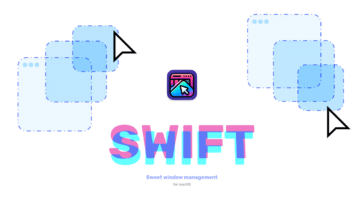
Earlier this week, Adobe launched the latest version of the Creative Cloud suite, CC 2020. While we plan to offer a more detailed look at a later time, including the possibility of a couple competitive reviews (think Affinity apps), this article provides a quick overview.
Overall this release is more about the improvement of existing functions and added stability and less about headline features. While that’s not as exciting to the average user, this approach is not a bad thing. For years, many long-time users complained that Adobe fell victim to the “feature bloat” trap. They perennially released new features that were designed to wow people (i.e., were easier to market) but which were either not often requested or not fully “baked.” In the meantime, many existing, commonly used features were not evolving. Note that this article is focused on the desktop version of the applications.
 Photoshop
Photoshop
Nowhere is the focus on evolutionary—rather than revolutionary—improvements in CC 2020 more apparent than in Adobe’s flagship product, Photoshop. Here are the main highlights:
Usability / UI
- Expanded Properties panel – Offers access to more commonly used functions and modifiers, especially for type layers and pixel layers.
- RIP Presets Manager – Presets for gradients, patterns, and shapes are now housed in new, dedicated panels that can dock to the side of the app frame and which allow the presets to be organized to suit your workflow. Many of the presets themselves have been updated, particularly the gradients and shapes.
Performance / Accuracy
- Improved Object Selection – The Object Selection tool and Select Subject command now use the Adobe Sensei AI algorithm to more accurately detect and select objects (or parts of objects), with fewer steps than were previously required. The familiar masking workflows still apply when refining a selection.
- Improved Content-Aware Fill – Now allows you to more precisely define the area(s) from which the textures and colors in the selection will be replaced.
- Transform Warp – There has never been a shortage of methods to warp pixel layers in Photoshop (e.g., Liquify, Puppet Warp, etc.). But now the original Warp command is more precise, allowing you to place additional control handles throughout the image, making it easier to change specific parts of the image.
 Illustrator
Illustrator
Illustrator 2020 provides a modest mix of performance improvements and simplified workflows, albeit frequently used ones.
Performance Improvements
- Open / Save – Files with complex layer hierarchies and/or multiple artboards can now open up to twice as fast, according to Adobe. And at least as important, saving files is now done in the background so that you can keep working on your project. This is a potentially big deal for many users.
- Drop Shadow / Gaussian blur – These two commonly used “effects” in illustration now allow you to preview the effect before applying it, and will also render more quickly.
Usability
- Path Simplification – This tool has an improved algorithm that allows it to remove more extraneous points from a new path than before while maintaining the original shape.
- Real-time Spellcheck – Illustrator can now highlight words/layers that have spelling errors on the fly, similar to a word processor with auto spellcheck turned on.
 Premiere Pro
Premiere Pro
The Adobe video team has implemented what I would consider being a more significant number of useful “JDI” type improvements. They’re not all covered here, but some of the highlights include:
Performance
- Metal (macOS) – Adobe has moved on from the previous OpenCL compute acceleration technology. It has now officially adopted the approach of using Apple’s Metal API for GPU acceleration of select features.
Usability
- (New) Auto Reframe – Also powered by Adobe’s Sensei AI algorithm. This feature allows you to automatically crop footage (including graphics and edits) to match a specific screen type. For example, vertical smart-phone formats, or cinematic 16:9.
- Time Remapping (up to 20,000%) – This can allow you to create a time-lapse effect from very long source clips rather than working with large numbers of individual photos.
- Multiple UI improvements when working with Motion Graphics templates from AE.
- Improved Compatibility Reporting – Does a better job of letting you know when your OS and/or GPU drivers are incompatible with Premiere Pro.
File Format Support
- Improved Apple ProRes support
- Import AVI Motion JPEG for macOS
- Encode Apple ProRes MXF Op1a
- Import Canon XF-HEVC footage
 After Effects
After Effects
The AE team has begun to improve the After Effects core and rendering engine to address long-standing complaints about the inability to design and iterate in real-time (or anything close to real-time) when working with complex compositions. Here are some highlights, with hints from Adobe that more significant changes (such as a new, multi-threaded CPU renderer) may be on the horizon.
Performance / Usability
- Metal (macOS) – Adobe has moved on from the previous OpenCL acceleration technology and has now officially adopted the approach of using Apple’s Metal API for GPU acceleration of select features.
- Preview / Playback – To quote directly, “This release of After Effects offers threading improvements which give a sharper and quicker preview playback. You can also leverage the new GPU-accelerated display system core to achieve an accurate view of your designs without breaking your creative flow. GPU rendering enhances the preview playback performance, and gives you a clear, and more detailed real-time preview of your project.” We will have to wait and see what the verdict is from long-time users, especially Mac users who are traditionally hindered by AE and PR’s stronger reliance on NVIDIA GPUs for performance accelerations.
- Faster / Better EXR Workflows – Use of EXR files in generating VFX is a long-standing, essential workflow in AE. Now it is possible to use the assets built into these files to generate comps on import directly, and in general, AE processes these files more quickly than in the past.
- Expressions – In addition to a more refined editor, After Effects’ handling of expressions is more intelligent, looking for values that do not change over time (within a comp) and then processing that calculation only once, freeing up CPU cycles for other tasks.
- Content-Aware Fill – This more recent addition to AE has been further refined to produce faster, more accurate results when removing an object from a series of frames and replacing it with nearby texture and color in a seamless way (similar to what Photoshop does with individual image layers). Adobe further adds that memory usage is reduced by over 60%, and overall performance improved by 10-25%, depending on the scenario.
- Other – Adobe has officially removed the legacy Raytracing option (this was hinted at in previous releases), leaving only the AE “Classic” renderer and the renderer from Cinema 4D Lite R21.
 InDesign
InDesign
Unfortunately, InDesign 2020 has little which is new other than improved SVG support, but there were quite a lot of stability improvements made. According to indesignsecrets.com, those include improvements to things like “IDML import, GREP searches, cross-references, anchored tables, and CC Libraries.”
Ironically, maybe the best thing about InDesign CC 2020 is an “addition by subtraction” – namely the removal of Adobe Flash functionality. Best of all, Adobe will soon cease all development and distribution of Flash plugins. This is good news for everyone as Flash is a technology that is prone to security flaws and was not initially intended for what is now its most common use – streaming video. For those less familiar, it was the digital media equivalent of solving a problem with duct tape instead of a proper structural fix (which eventually appeared in the form of HTML 5 and related web standards).
There are many other apps in the CC 2020 suite, most of which have something new to offer, but these are the main highlights for the traditional design and editing crowd. We can now look forward to what further performance and feature improvements Adobe brings in the next set of interim updates, probably sometime in the first half of 2020. Let’s hope they don’t increase their subscription price again between now and then.










I keep paying a heavy subscription fee and the improvements in stability of indesign and illustrator have been getting worse in my view and precious little in the way of powerful new features. I use the other apps less. Looking forward to trying out affinity apps, sketch etc and waving goodbye to the corporate cash cow known as adobe.
Hi Alastair,
Affinity apps (from Serif) have earned quite a following in recent years and with good reason; not only do their three apps provide the core functionality creative pros need, but so far they innovate at a greater pace than Adobe and offer all of that functionality in a perpetual, very affordable license. Also they do a good job of implementing standard file formats like PSD, AI, and TIF. Not to mention that these are Mac-first apps, adopting technologies like Metal from the start.
We are evaluating some of the functionality in the “Affinity Suite,” and will have some perspectives to share in the near future. Stay tuned.
here, the same! yesterday bought capture one – maveric was the last good osx! 3 times faster then now – think apple is a sinking star!!! ;-)